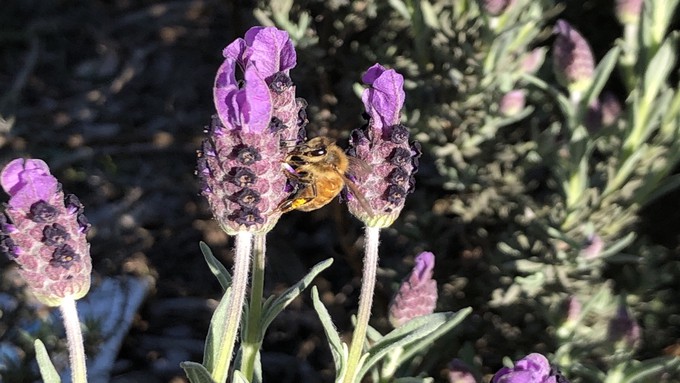
Tips to help make 2023 your best gardening year

Resolve to bring more pollinators into your garden with plants such as lavender. Kathy Morrison
Happy new year! Now what?
These past 12 months have been challenging for our gardens – something we can say about all drought years. How can we make 2023 better? Be prepared. Plan ahead. Have more fun.
We can’t control the weather (if we could, we would). But as we get drenched by an atmospheric river to close out 2022, our prospects for a “normal” water year at least look promising.
We thought the same thing last December when heavy rain brought declarations that our drought days were over. Then, we experienced the driest spring in Sacramento history.
Tradition dictates that it’s time to look ahead with resolve. But to do what? For us gardeners, these simple resolutions will make our lives easier and help our gardens thrive – no matter the weather.
1. Take notes. Be observant and write down what you see. Your landscape is changing. (Trees and shrubs grow; sunny spaces turn to shade.) You may need to make adjustments. Also, note what varieties did well, which didn’t. (This is key to veggie success.)
2. Use a calendar. Paper or digital, calendars are handy for jotting down those notes and keeping track of dates. For example, when did you plant seeds or transplants? When did you harvest your first tomato? You can refer to those dates later when making decisions about next season. (Tip: Get a master gardener calendar; it comes packed with monthly reminders.)
3. Do things at the right time. Plant, prune, fertilize, harvest; gardening is all about timing. For example, plants need important nutrients at critical steps in their development. Figure out in advance when you should feed certain plants (and mark it on that calendar!)
4. Install a smart controller and upgrade irrigation. Never have your sprinklers come on again during a storm. If you haven’t done this yet, now is the time. Water providers have rebates available for upgrading your irrigation technology. It will make your life simpler (and save water and money, too). For rebates: www.bewatersmart.info.
5. Invite wildlife into your garden and enjoy the show. Plant nectar- and pollen-filled flowers that hummingbirds, bees and butterflies love. Other birds like berries and seeds; they appreciate bushes that provide them a feast. Make them feel at home, too. Besides plants, provide a bird feeder, bird bath or bee house. For yourself, put a comfortable chair or bench in a spot where you can watch the antics of visiting winged friends. It’s a sure way to get more fun out of your garden space.
Comments
0 comments have been posted.Sacramento Digs Gardening to your inbox.
Sites We Like
Garden Checklist for week of July 21
Your garden needs you!
* Keep your vegetable garden watered, mulched and weeded. Water before 8 a.m. to reduce the chance of fungal infection and to conserve moisture.
* Feed vegetable plants bone meal, rock phosphate or other fertilizers high in phosphate to stimulate more blooms and fruiting. (But wait until daily high temperatures drop out of the 100s.)
* Don’t let tomatoes wilt or dry out completely. Give tomatoes a deep watering two to three times a week.
* Harvest vegetables promptly to encourage plants to produce more. Squash especially tends to grow rapidly in hot weather. Keep an eye on zucchini.
* Pinch back chrysanthemums for bushy plants and more flowers in September.
* Remove spent flowers from roses, daylilies and other bloomers as they finish flowering.
* Pinch off blooms from basil so the plant will grow more leaves.
* Cut back lavender after flowering to promote a second bloom.
* It's not too late to add a splash of color. Plant petunias, snapdragons, zinnias and marigolds.
* From seed, plant corn, pumpkins, radishes, winter squash and sunflowers.